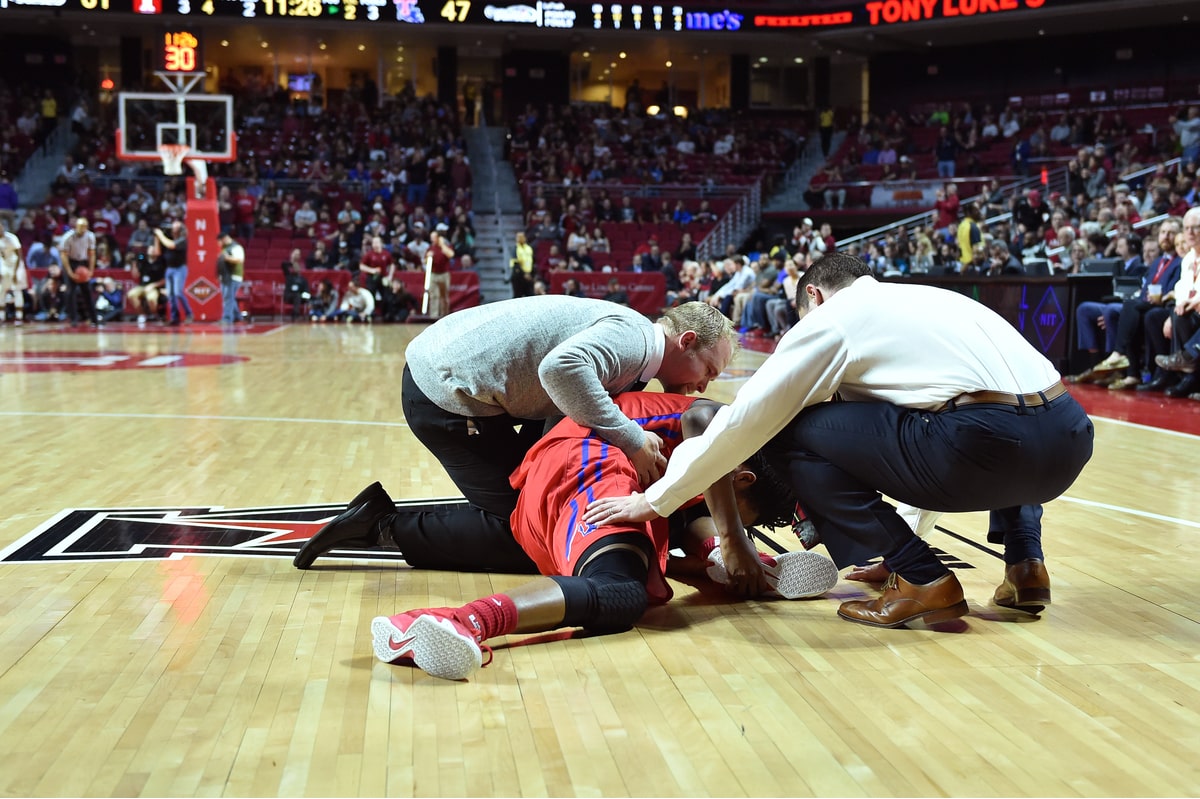Risk Exposure Time
The increasing number of injuries in all sports for all ages begs the question: Is the risk worth it? Can the risks be decreased? How do we increase the fun/time ratio without the injury cost?

Klay Thomson and Kevin Durant were injured near the end of a seven-month, 104-game season. If you run athletes long enough, they eventually break down. The risk of injury increases with time, fatigue, and intensity. This is true across all sports.
For young athletes, these injuries—particularly to the shoulders and elbows in youth baseball, knees in youth soccer (especially among girls), and backs in rowing—can be devastating. These injuries impact not just their sports seasons, but also their careers—and may expose them to a later lifetime of arthritis. An ACL injury, for instance, is permanent. Yes, the ligament can be reconstructed, but the incidence of knee arthritis rises to 50% at 10 years after injury. The normal mechanics of the knee joint are never restored completely. This is true for many other joint injuries as well. Even with early repair, a dislocated shoulder with an associated bone injury has a 30% chance of repeat dislocation. Back pain in youth rowers often leads to years of relative disability.
Still we all chose to play, rather than hide in a protective bubble. And surely injury prevention programs have a place in all of our preseason training programs. Athletes who are trained to land properly, for example, have fewer ACL injuries than their untrained peers. But these programs are not nearly effective enough. Next year, there will be more than 350,000 new ACL injuries in the United States alone.
There may, however, be one substantial change that can make a difference: risk exposure time. If we can increase the intensity, the enjoyment, and the fun; yet decrease the length of time the riskiest sports are played, the injury rate will go down.
How do we do this? The most obvious change could be shortening the seasons. Does the traditionally indoor winter game of basketball really need to end in June? Do baseball seasons really need 162 games? Do we really want our children playing one sport all year round to make the team?
In pro sports, it is all about the money. Each additional game brings in more revenue. But at what cost? If the stars are going down late in the season, can you really predict who the best teams are or who will be left standing to win the championship games? Shorter seasons would provide a more accurate outcome of the whole team’s skill.
In amateur sports it was long believed that to be the next Tiger Woods, you needed to play that single sport from age three onward. But even Tiger learned that sports change and that cross training and overall fitness matter. Three-season high school athletes are more versatile—and often more talented—than single-sport specialists. And their injury exposure is less concentrated.
Skiing is one great example of how technology is changing risk exposure. Years past, skiers would wait in long lift lines to ride slow lifts and get in a handful of runs in each day. Their skis were long, straight, and stiff. Today’s high-speed lifts propel skiers uphill in minutes. Lift lines are minimal. Ski technology has improved so much that everyone can now turn the ski and have fun. The actual time skiing on the snow has increased dramatically—but so have injuries. The reasons are many, but one big part of this equation is financial: The cost of skiing has increased so dramatically that people want to cram in as many runs in a single day as possible. Fatigue leads to the classic “Wish I hadn’t taken that last run!”
Are there any solutions? We all love playing and watching sports. But is more really better? Or could it be that more intensity, over less time, is better? Could we create incentives that shorten seasons, while increasing the fun for both fans and athletes?
In skiing, one solution may be to charge for each run rather than set a flat fee for the entire day. In basketball, what if the substitution rules were changed to mimic baseball and soccer? I.e., once subbed, the athlete is out for the game. This, or some other combination of playing rules, could force more intense play but with shorter risk exposure times. And the seasons themselves could be shortened, permitting longer layoffs and better off-season fitness training.
As we lengthen our seasons, we kill off our stars. Let’s come together to solve this problem. As much as I love playing and watching, and solving my patients’ injuries, I know that my solutions are no match for the original. My job, first and foremost, is to help my patients not get injured in the first place.
